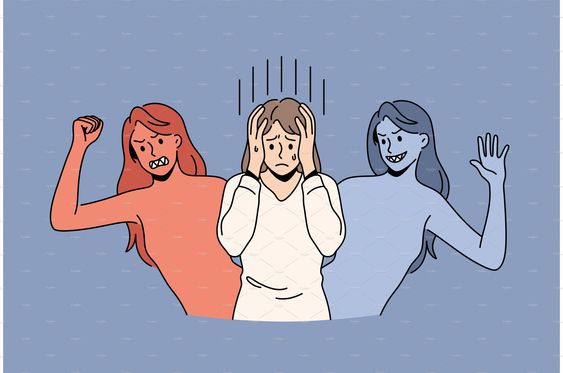Have you ever felt like you’re riding a whirlwind of emotions, soaring to exhilarating highs one moment and plummeting to crushing lows the next? If so, you might be wondering what’s causing this intense ride. One possibility is bipolar disorder, a mental health condition that affects millions of people worldwide.
Bipolar Disorder: A Balancing Act Gone Wrong
Imagine your mind as a finely tuned piano. When everything is in harmony, the music flows beautifully. But what happens if some keys are stuck, while others play too loudly? The melody becomes erratic, discordant, and overwhelming. This is what bipolar disorder can feel like – a delicate balance of emotions tipping dramatically from one extreme to the other.
The Two Faces of Bipolarity:
- Mania: On the “up” side, mania can bring bursts of energy, euphoria, and impulsivity. People in this state might feel invincible, sleep less, talk rapidly, and engage in risky behavior. Imagine being on top of the world, feeling like you can achieve anything, only to find reality crashing down later.
- Depression: The “down” side of bipolar disorder is called depression. It’s like a dark cloud engulfing your thoughts and feelings. Hopelessness, sadness, fatigue, and loss of interest in activities become the norm. It’s like being trapped in a bottomless pit, unable to see the light.
Bipolar Disorder is NOT Just Mood Swings:
While mood swings are a key symptom, bipolar disorder is much more than just being a little grumpy one day and overly happy the next. It’s a complex condition with a range of symptoms that can significantly impact a person’s life. These can include:
- Changes in sleep: Sleeping too much or too little becomes common.
- Energy shifts: From boundless energy to feeling drained and sluggish.
- Racing thoughts: Jumping from one topic to another, unable to focus.
- Changes in appetite: Eating excessively or losing interest in food altogether.
- Suicidal thoughts: In severe cases, depression can lead to thoughts of self-harm.
The Many Masks of Bipolarity:
Bipolar disorder is not one-size-fits-all. It can manifest differently in different people. Some may experience rapid cycling through episodes, while others might have longer periods of stability between extremes. There are also different types of bipolar disorder, each with its own unique characteristics.
- Bipolar I Disorder: This is the classic form, characterized by clear episodes of mania and depression lasting at least a week.
- Bipolar II Disorder: Less severe than Bipolar I, it involves hypomania (a less intense form of mania) and major depressive episodes.
- Cyclothymia: This milder form involves frequent mood swings that don’t reach the full criteria for mania or depression.
A Light at the End of the Tunnel:
Living with bipolar disorder can be challenging, but it’s important to remember that you’re not alone. With proper diagnosis, treatment, and support, people with bipolar disorder can lead fulfilling lives. Here are some key points to remember:
- Early diagnosis is crucial: The sooner you seek help, the sooner you can start managing your symptoms and get on the path to recovery.
- Treatment is essential: Therapy, medication, and lifestyle changes can work together to stabilize your mood and improve your quality of life.
- Support is key: Surround yourself with supportive people who understand what you’re going through. Don’t be afraid to reach out for help, whether it’s from family, friends, or a mental health professional.
Examples of Finding Hope:
Imagine Robin Williams, the beloved comedian, openly sharing his struggles with bipolar disorder. His story shows that even successful people can face this challenge, and that it doesn’t define who you are. Or think of Demi Lovato, a singer who uses her platform to raise awareness about mental health and empower others with bipolar disorder. These individuals, and countless others, serve as a beacon of hope, demonstrating that living with bipolar disorder doesn’t have to mean giving up your dreams.
The Takeaway: Riding the Waves with Care
Bipolar disorder might feel like an emotional rollercoaster, but you don’t have to ride it alone. With understanding, support, and proper treatment, you can learn to manage the ups and downs and create a life full of meaning and joy. Remember, even the wildest storms eventually give way to calmer seas
